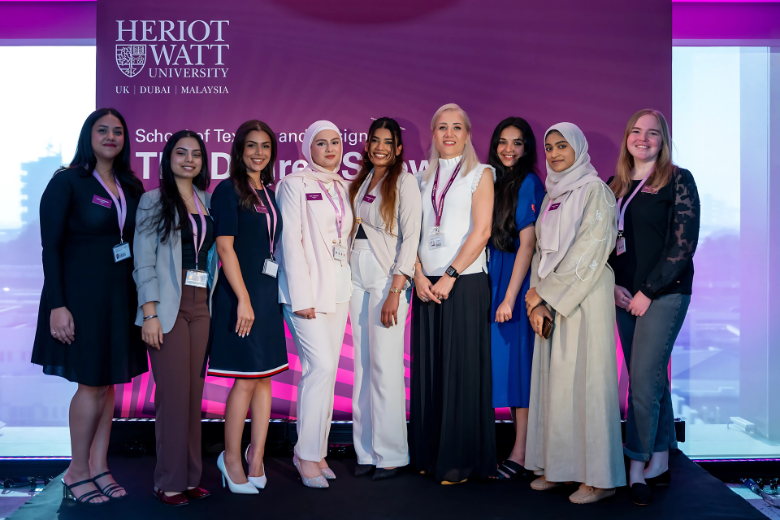A Celebration of Creativity at Heriot-Watt University Dubai
Heriot-Watt University Dubai is proud to unveil the second edition of its highly anticipated Degree Show, organised by the School of Textiles and Design. Running until 27 May 2025 at the university’s Dubai Knowledge Park campus, the exhibition offers an inspiring look into the work of final-year students across Interior Architecture and Design, Communication Design, and Fashion Branding and Promotion.
This year’s theme, Displayground, invites visitors into a world where the spirit of play fuels imagination and innovation. Play, as both a mindset and a method, enables students to push boundaries, experiment with materials, and find meaningful, sustainable solutions to global challenges. From fashion to interiors, and from branding to communication design, students have embraced the theme to explore new frontiers in design.
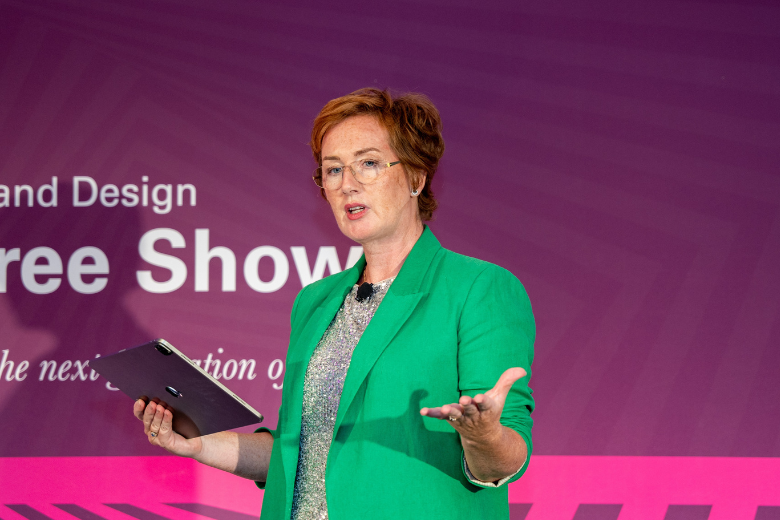
“Our graduates have not only created visually powerful work—they’ve addressed urgent issues through design thinking,” says the School. “They’re showing how creativity and responsibility go hand in hand.”
The Heriot-Watt University Dubai Degree Show also features a special global collaboration. For the first time, it connects the Dubai and Scotland campuses through an interactive online platform, enabling visitors to explore the show virtually from anywhere in the world. This initiative underscores the university’s commitment to cross-cultural dialogue and global innovation.
A private viewing, held on 16 May, welcomed design industry professionals, entrepreneurs, academics, and media for an exclusive preview of the graduating cohort’s finest work. These innovative student projects explore bold, real-world themes and demonstrate the university’s continued commitment to creative excellence and future-focused education.
Below, we spotlight four standout student projects from The Degree Show 2025.
1. Enscape: A New ‘Third Place’ for Youth
Student Name: Liliya Smolenskaya
Programme: Year 4, Interior Design and Architecture
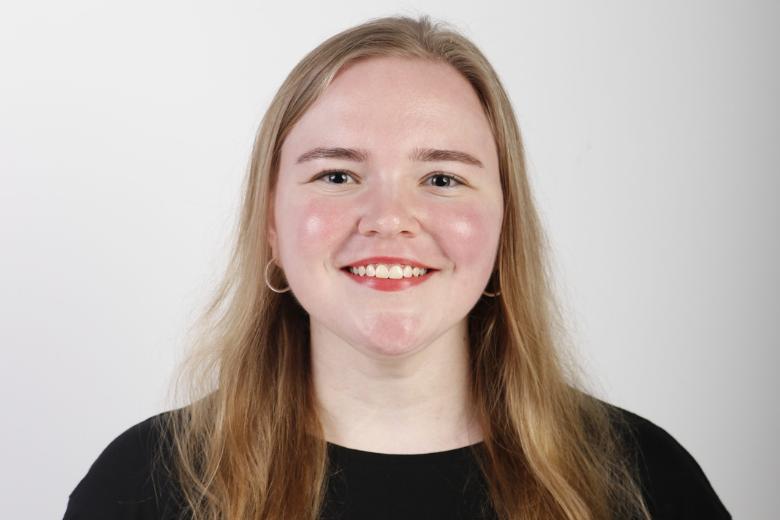
The Concept: A cinema-centric entertainment center for young adults, with the design taking inspiration from the concepts of the past, present, and future. At the beginning of this project, I did research on the CrowdStrike Windows outage of 2024, and after a lot of in-depth investigation, I started to ponder about the significance of time in major crises, which inspired me to explore how we perceive the past, present, and future. I then reflected these ideas in the physical space via the spatial relationships, activities, and the interior design. As for the function of the space, I wanted to create a third place for youths where they can not only enjoy themselves but also develop their skills and deepen their understandings of various topics. Each of the three zones – The Past, The Present, and The Future – hosts a different set of activities to entice a wide range of visitors. The Past offers immersive and high-tech experiences of iconic moments in cinema history, The Present allows visitors to explore the tangible side of film via memorabilia and collectibles, while The Future is all about learning and honing various skills via interactive and hands-on experiences.
With my project, my goal was to create a major entertainment destination for today’s youth who are lacking third places – spaces outside of their homes and schools – particularly in Dubai. Third places are beneficial for individuals’ mental health as they offer a safe and comfortable environment, while their lack correlates to the rise in loneliness felt amongst Gen Z, who also tend to value digital spaces over face-to-face contact. I aimed to cover a wide range of interests and activities to offer in the entertainment center so that, ideally, everyone would have something they would like to do there. I also diversified the functions by offering not only the typical fun activities like arcade games and a VR zones, but also some engaging educational ones, like various workshops and an auditorium for performances and guest sessions. The idea for this came from my own experience growing up in Dubai, where friend groups usually gather in malls, and other options are limited. So, after doing research on the wider issue of third places and its impacts on individuals’ health, I decided to create an inclusive and welcoming space where socializing and enjoyment go hand in hand.
The biggest challenge I faced was having to be innovative and original with the work that I was doing. Trying to break out of my usual way of thinking and do things that have never been done before was very difficult, however, after countless feedback sessions and lots of guidance, I was able to adapt a new way of thinking and designing, which led me to my final outcome that I am proud of.
Throughout this journey I was able to further develop my concept creation and creative thinking skills. The concept was highly important for this project, and we spent many weeks researching and perfecting it, and I developed my skills rapidly during this period of time. I never had the opportunity to create such a complex concept before, and after this project I not only know how to come up with a concept, but also how to execute it both spatially and visually, which elevated my designs. I was also consistently pushed to think outside of the box and design in an unconventional way, which enhanced my creativity. The challenge of this project was to use everything we have learnt to create one-of-a-kind designs, so I was constantly ideating how to reflect my ideas in a way that subverts expectations while being fitting for the context of the space.
2. Opus Tower: Bridging Sustainability and Design
Student Name: Siddeeqa Ashraff
Programme: Year 4, Interior Design and Architecture
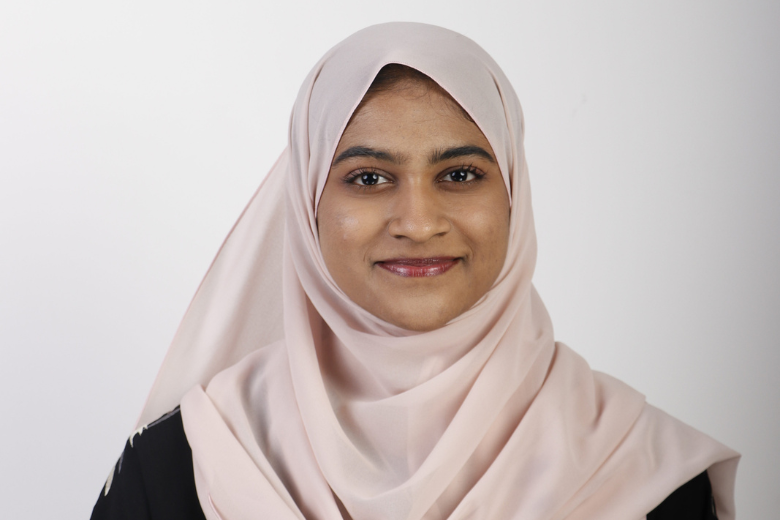
The Concept: The project is a sustainable energy research facility located in Business Bay. I have deconstructed the Opus Tower and its last two floors and used the space for my facility. I aim to keep the project a non-profit one and work in partnership with local energy entities such as DEWA.
The research facility is designed to bridge the gap between public and private entities that desire co-existence and want to work together. The public can gain access to reading and research materials, special education and the latest technology like never before through my center.
Taking the recession of 2009 which struck Dubai as my event, I deduced that most recessions are a constant cycle and for people to avoid it they must achieve self-sufficient growth. Using cycles as my concept, I ensure users experience a loop system through special areas and focused zones to learn, relax and return back to their original point or activity in the space.
Coming up with a convincing story and floor plan which encompassed my idea was a challenge. Taking an abstract idea such as the recession and forming a set of spatial design rules took weeks of trial and error before working.
Design is a very subjective matter and creating renders which a majority of people would like was hard. I had to alter my colour palette, lighting and even mood of the reception space for it to get accepted, but I value the guidance and opinions of my friends and mentors a lot. They helped me realize my true potential and their input changed my design for the better.
I was able to develop my technical 2D and 3D software skills as well as my soft interpersonal skills such as critical thinking and problem solving whenever an issue arose for example when one of my key softwares stopped working I tried several other alternatives and learned some new technical skills along the way helping me achieve my artistic collages despite switching from software to software.
I have to thank my head professor Dima for aiding me throughout my journey from year one to year four as she has helped me think of design in a more abstract and critical manner. Professor Allan who over-saw my final year project gave me amazing feedback and critical reviews to fine-tune my designs. He taught me how and where the project goes later on in the industry and how important blue collar workers are when it comes to creating their space on our floor plans. The technology provided for me to achieve my physical models were advanced, we had laser cutting machines, 3D printers and various materials to help aid in the design such as blue acrylic sheets and semi-transparent filaments to 3D print my design in.
3. SERA: Reinventing the Retail Experience
Student Name: Bianca Shane Abe Pulido
Programme: Year 4, BA Fashion Branding and Promotion
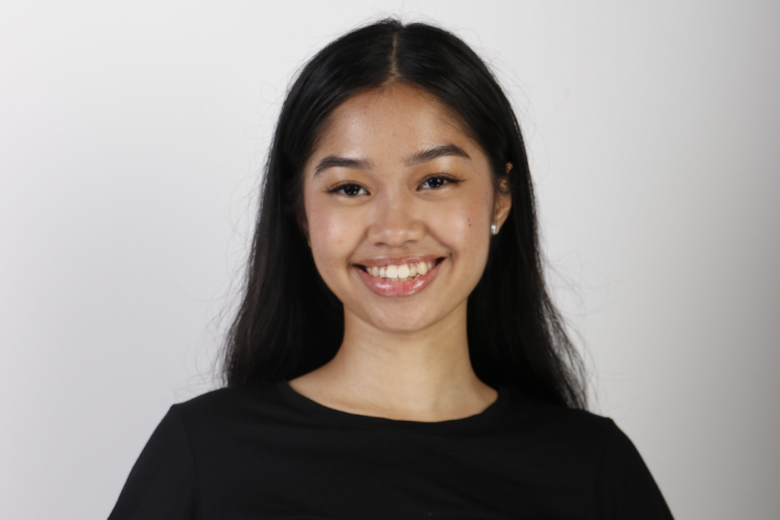
The Concept: SERA is a cutting-edge touchscreen display integrated into retail environments to enhance the shopping experience. This advanced system empowers customers to effortlessly locate desired items without the inconvenience of traditional product tags. Available in two editions—Prime and Elite—SERA addresses diverse consumer needs by providing independence and control in the shopping journey. This system creates a curated display that makes shopping easier and more enjoyable. With SERA, shopping becomes efficient and pleasant, transforming retail convenience and supporting consumers’ physical experiences in-store.
The project’s key benefits lie in enhancing the in-store shopping experience by helping customers easily locate their desired items, receive personalised recommendations for similar products, and navigate the store efficiently. It significantly reduces the time spent checking product tags for sizes and prices, enabling a more productive and enjoyable shopping journey. By addressing common challenges, such as the need for greater independence, better time management, and curated product discovery, SERA delivers a seamless and personalised retail experience. My experiences, passion for retail innovation, and strategic problem-solving inspired the idea.
One main challenge during the execution phase was translating the concept into a functional and visually coherent user interface and user experience. As a student specialising in fashion branding and promotion, UI and UX design are not my core areas of expertise, so developing the digital design elements of the product required additional effort, learning, and adaptation.
I was fortunate to receive guidance from three professors, each offering expertise in key areas such as strategy, branding, UI/UX, and digital design. Their insights were invaluable throughout the development process, helping to refine both the concept and execution of the project. Additionally, the support from the university’s fabrication lab played a crucial role in bringing my prototype to life, providing the necessary tools and resources for its physical development.
Working on this project helped me develop a range of skills. Since the course is fully autonomous, I had to take complete ownership of the project, from concept development to prototyping and testing. Because the project involved UI/UX and product design, I also had to step out of my comfort zone and learn new software tools like Adobe XD and Blender for prototyping. One of the most valuable lessons I learned was staying objective and critical throughout. I realised early on that I couldn’t get too emotionally attached to the idea, and that being open to feedback and iteration was key to improving the outcome.
4. Pulse: Fitness Through Connection and Accountability
Student Name: Siddharth Mhatre
Programme: Year 4, Communication Design
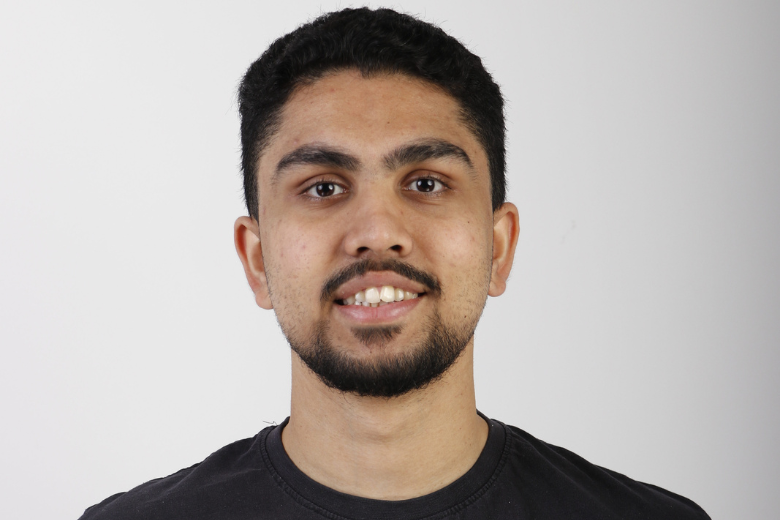
The Concept: Pulse is a digital companion designed for people who want to take their fitness goals seriously. Built around the core idea of accountability, Pulse helps users track their goals, stay consistent, and document real progress. It’s not about filters or aesthetics — it’s about raw effort, discipline, and personal growth. From sharing milestones to supporting others on their journey, Pulse creates a space where fitness becomes a shared experience. With a minimalist design and a focus on function, Pulse brings clarity, motivation, and momentum to your everyday grind.
The key benefit of Pulse is:
- Accountability: Users can visually track their fitness progress and feel motivated to stay on course.
- Real Progress Sharing: Focuses on before/after, goal tracking, and real efforts — not curated aesthetics.
- Minimal Distraction: A clean, minimalist design to avoid the clutter of other social or fitness apps.
- Community without Comparison: Encourages motivation through shared progress, not competition or likes.
The challenge today is that many people feel overwhelmed when starting fitness activities like going to the gym, running, swimming, or cycling. One of the biggest reasons for this is the lack of a support system—they don’t have a fitness buddy. Research shows that individuals are more likely to stay consistent and reach their fitness goals faster when they have someone to train with, stay accountable to, and share the journey with. Pulse is designed to help bridge that gap by building a space where connection, consistency, and motivation come together.
I came up with the idea for Pulse because I’ve faced the same struggle. Having a fitness buddy made all the difference for me — it helped me stay consistent, motivated, and focused. Pulse is designed to bridge that gap for others, making it easier to connect with like-minded individuals and build a sense of community around fitness.
One of the biggest challenges I faced was managing time effectively across different aspects of the project — from UI/UX design to video production. As a solo creator, it was challenging to balance the design process, user research, prototyping, and then also plan, shoot, and edit a promotional video. It was also my first time directing a video shoot and coordinating with people, which pushed me out of my comfort zone. Technically, learning new tools like Figma and understanding the prototype features took time. Despite these hurdles, every challenge became an opportunity to grow. Throughout the project, I received valuable support from my tutors and mentors at the university. Regular feedback sessions helped me critically reflect on my design choices and improve the overall direction of my app. I was also guided on how to structure my research, frame my user testing, and communicate my ideas clearly. The university provided access to essential resources such as software and equipment, especially for the video shoot. This project pushed me to take full advantage of the design process we’ve been taught — from ideation and wireframing to prototyping and final presentation.
For more information about Heriot Watt University Dubai, visit the website below:
Further Reading on Heriot-Watt University Dubai:
- Heriot-Watt University Dubai Granted Accreditation for All Undergraduate and Postgraduate Programmes by the UAE’s Ministry of Higher Education and Scientific Research
- GCC Board Gender Diversity Sees Steady Growth Since 2024, Report Reveals











